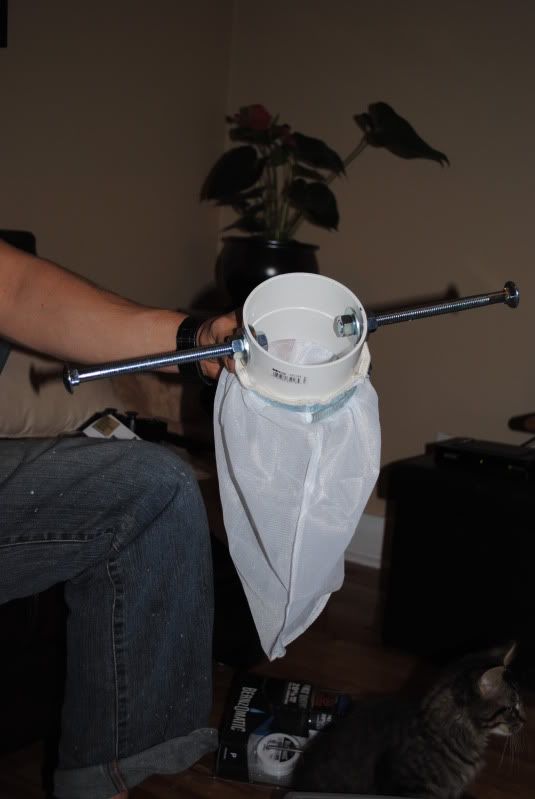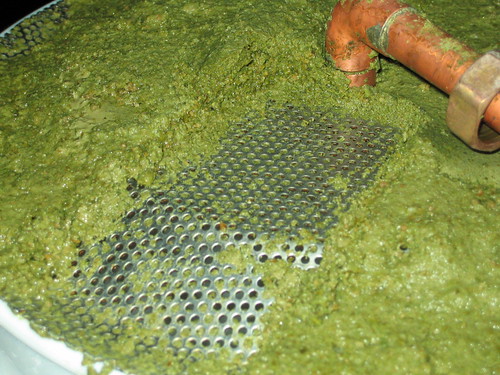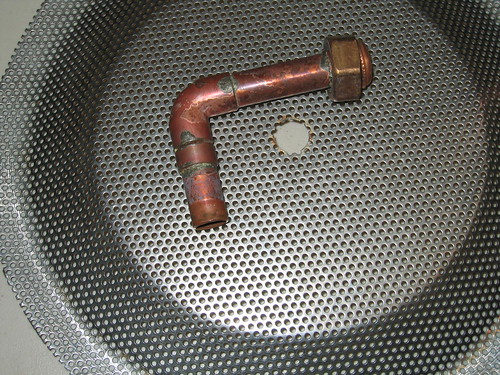I decided to go ahead and post some pics even though I have not finished with the testing part, so caveat emptor etc.
First off, this will not work for everyone. It's intended for use with the pie plate type false bottom (I have the one from Northern Brewer), although the general concept might be applicable to some other configurations.
Here's the scoop. When using this FB in my boil kettle as a hop screen, the hops and trub tend to cake up on the FB which severely restricts the flow. This interferes with my circulation through a CFC and back to the kettle for a rapid chill and whirlpool effect. The more hops I use, the more severe the restriction seems to be. While cleaning the kettle after the boil, I have noticed that the hops and break material tend to cake up densely on the FB. I also noticed that they stay put even when I lift the FB out of the kettle. It occurred to me that one could take advantage of this caking effect. I thought that if I could let the hops and break material cake up as usual until the flow rate slows, I could then use something to lift the FB slightly allowing the wort to flow under the edge and this would restore full flow. I rigged up a lifting rod made from a section of 1/4" copper and simply used an SS sheet metal screw to attach it to the FB. I bent the top to hook over the lip of the keg top to hold it in the up position. When not lifting the FB, it just leans against the inside of the kettle. My dip tube holds the FB firmly in place, yet there is enough flex in the FB to permit lifting the edge about 1/8-1/4" or so without any deformation of the FB. This will only work if you have some way to hold the FB down securely and your pickup tube must be able to resist bending easily. The 1/2" rigid copper works really well in that regard.
This is what the cake looks like on the FB with part of it scraped away so you can see the thickness:
This is a view of the lift rod attached to the FB and hooked over the lip of the kettle
Here it is on my work table for a better view
This is a close up of the business end of the pick up tube. Note the ring sweated to the down part just below the elbow. This ring was cut from a coupling and serves to hold the FB down firmly.
Thought I'd get these pics up as it will be awhile before I can evaluate this mod completely. I'm guessing that this configuration will hold back better than 98% of the debris and possibly more. I'm mostly seeking a high flow rate for a fast chill. This solution may be too easy for some. If anyone gives it a try, please post back with your results.











